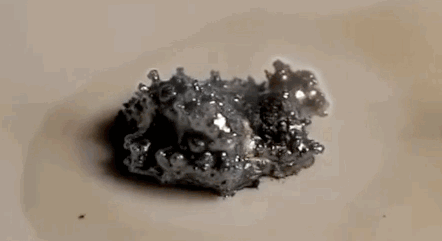Ever wonder how they get
objects to look gold without using real gold? Or how aeroplanes manage to go
through intense weather conditions and corrosion and yet still look so shiny
and new? The answer lies in the application and science of thin films. As mentioned
in The ever shrinking world of microelectronics, thin films are a growing area of applied science that is used all around us! A
major part of thin films and an area of research that is continuing to grow in
interest is the deposition process used to make them.
Thin films have been in
research and development for hundreds of years. They are in application all
around us including mirrors, solar panels, coatings for tools, aerospace
engineering and much more. They physical and chemical properties of the thin
films is decided by the substrate (the base) the thin film is coated on and the
precursors used. The precursor is the complex which is deposited onto the
substrate, often the precursor is not the compound that is wanted to be
deposited (the compound that the thin film is made up of) so reactions are often carried out during the deposition process.
Why the demand for better deposition methods?
As the
demand for better, smaller electronics grows the pressure is on to find new,
more efficient materials and more precise deposition methods is also demanded! As
substrates (microelectronics and other electronics) get more delicate and
sensitive, the way in which the thin films are deposited has to also change so
the substrates don’t get damaged. A major component of this is the temperature
at which the films are deposited. Older methods of deposition use rather high temperatures
(500
oC
+) and these new sensitive substrates would be damaged if exposed to these high
temperatures. This is a big problem in that to be able to deposit thin films at
lower temperatures not only does the deposition process have to change but so
do the precursors used. Temperature is such a major control of deposition
because for the precursors to react they all need to be a certain temperature.
If this temperature is not reached, then the reaction won’t happen and the
correct thin films won’t be made.
 |
| The burning of lithium How reactive a precursor is can be referred to as its volatility. So the more volatile a precursor, the more reactive is. A key part of a precursors that contributes to its volatility is its oxidation state. Much research has been done and is being done to look into if by lowering the oxidation state of a precursor means that it can be deposited at lower temperatures. To read more about this have a look at 99 problems where some of this research and its results are discussed. |
With this fast developing world of technology it is inevitable that problems will arise. It is down to material chemists and physicists to find and develop new chemicals and technology that will be able to keep up!
The future of new technology is all down to the research done by these scientists and who knows what the next big breakthrough will be?
The future of new technology is all down to the research done by these scientists and who knows what the next big breakthrough will be?


No comments:
Post a Comment